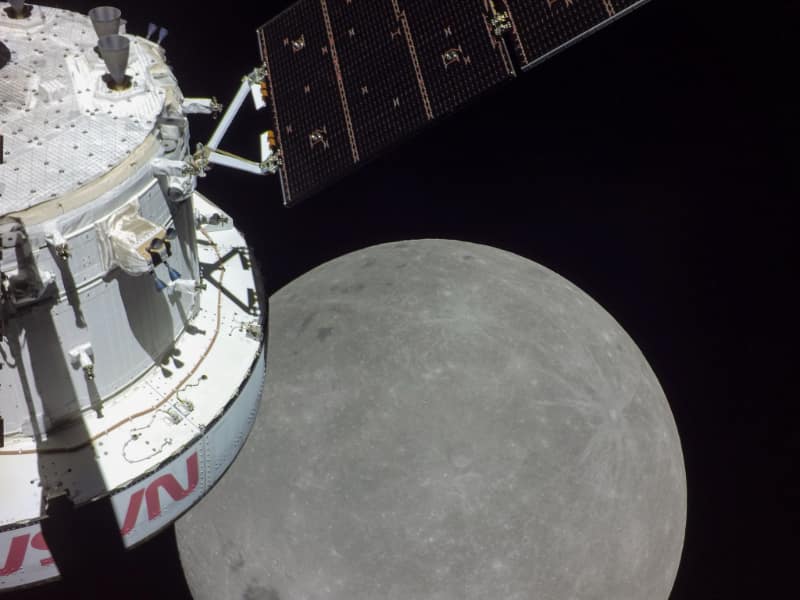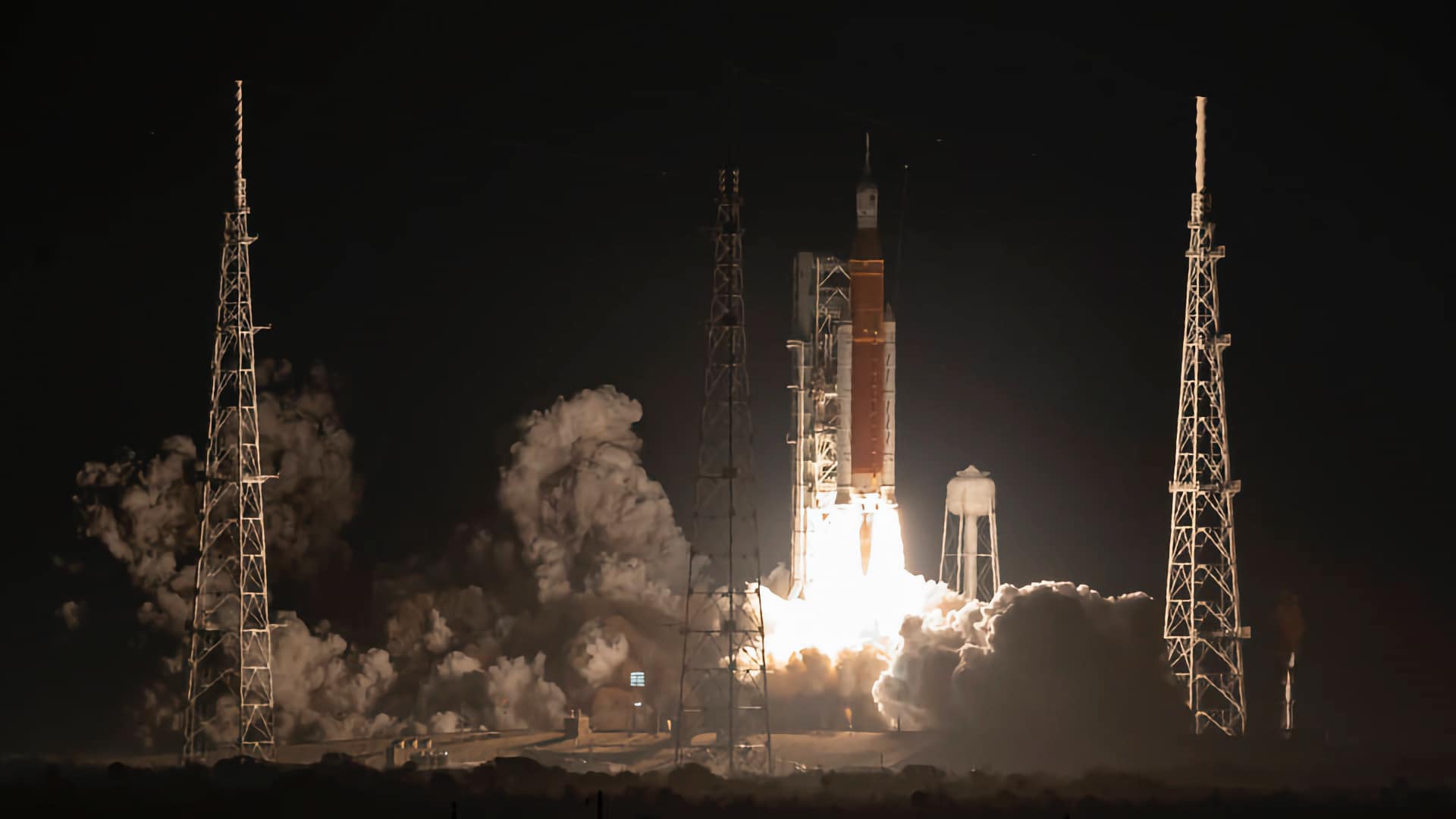
NASA’s Artemis I 25.5-day mission to the Moon and back is well underway and is being documented exhaustively by a range of onboard cameras.
NASA, of course, knows a few things about selling the science and has made sure that cameras are an integral part of its mission parameters since the early days. Few missions though have been festooned with quite as many imaging devices as Artemis I. All in all, according to a detailed blog post published after the launch, there are 24 cameras on the rocket and spacecraft – eight on the SLS and 16 on Orion – to document essential mission events including liftoff, ascent, solar array deployment, external rocket inspections, landing and recovery, as well as capture images of Earth and the Moon.
The one at the top of the piece may well go on to become the most iconic; a black and white photo of the Earth snapped by Orion’s optical navigation camera on Day 2 of the mission that does a lot to get across the sheer, unsettling, isolation of our planet in the inky void. There are others that really resonate too: the one below is of the far side of the Moon; the video at the bottom of this piece shows Earthrise from the Orion spacecraft; then, of course, there was the launch…

Capturing the SLS launch
The SLS (Space Launch System) has 8 cameras onboard. This pic was taken with none of them, but rather by Keegan Barber on a Nikon D4 with a 24-70mm lens at a f/2.8. If you ever find yourself in the same situation, 1/800 and 280 ISO are the way to go.

On the rocket, four cameras around the engine section pointed up toward Orion, two cameras at the intertank by the top of boosters were sited for booster separation, and two cameras were placed on the launch vehicle stage adapter to capture core stage separation. The eight cameras cycled through a preprogrammed sequence during launch and ascent.
On Orion, an external camera mounted on the crew module adapter showed the SLS rocket’s ascent, providing the “rocket cam” view often seen during launches.
Orion’s array
Four cameras attached to the spacecraft’s solar array wings on the service module will help engineers assess the overall health of the outside of Orion and can capture a selfie view of the spacecraft with the Earth or Moon in the background.
Usefully, the arrays can adjust their position relative to the rest of the spacecraft. This is mainly to optimize the collection of solar energy, but also allows flight controllers in the Mission Control Center at NASA Johnson to point the cameras at different parts of the spacecraft for inspections and to document its surroundings, including the Earth and Moon.
Fairly remarkably these are commercial off-the-shelf units heavily modded for use in space. NASA is currently remaining tight lipped about exactly who they’re from.
The optical navigation camera is fixed to the crew module adapter, as is another one pointed inward to capture imagery of Orion’s heat shield after the crew module separates from the service module before its re-entry into Earth’s atmosphere.
"Inside the spacecraft, three more wireless cameras can capture the perspectives astronauts will have on future Artemis missions, with one camera looking out the front pilot window and a second looking over the shoulder of the commander seat, where the instrument panel will be located on future missions," details NASA. "A third in-cabin camera will look out the top hatch window to provide views of launch abort system jettison during ascent as well as parachute deployment during landing and recovery."
Orion also has some onboard cameras that are part of a technology demonstration called Callisto. The Callisto payload includes three in-cabin cameras that will be used to test Webex video conferencing capabilities as well as a version of Amazon Alexa modded to run on NASA’s Deep Space Network.
Cue plenty of “Alexa, open the pod bay door,” jokes…
There are also two external high-speed cameras dedicated to monitoring parachute operations, which technicians will download and process after the flight.
Formats captured depend on the mission objectives for each camera and range from SD to 4K. Bandwidth constraints during the mission mean that some of the imagery we’re getting as it progresses will be downrezzed, with some of the highest quality views likely not received until well after they are recorded and can be downlinked.
Tags: Technology NASA


Comments